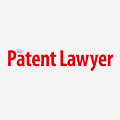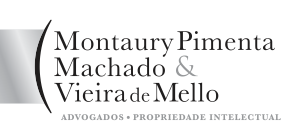Gabriela Neves Salerno of Montaury Pimenta Machado & Vieira de Mello and Jeffrey D. Morton of Procopio, Cory, Hargreaves & Savitch LLP provide a comparative review of the patenting system in Brazil and the US for new medical use and antibodies.
The Brazilian Patent and Trademark Office (BRPTO) has, in recent years, improved in terms of providing clear and detailed guidelines for examination of patent applications in the Life Sciences. ln parallel, and in light of a significant effort to tackle a pre-existing examination backlog, the timeframe for substantive examination has decreased considerably. However, Brazil still has certain unique rules when it comes to life sciences patent practice, which sometimes renders prosecution in the country a challenge for foreign applicants, such as those from the United States.
As discussed further in this article, the relevant patent law in the United States is generally viewed as being more flexible than Brazil's. Accordingly, the objective of this chapter is to provide a comparison between the patent practice in both countries, particularly considering important life sciences issues, namely new medical uses, and antibodies.
New medical uses
Brazil
New medical uses generally refer to patent claims that focus on novel, non-obvious uses of a known compound. ln Brazil, new medical uses have been a controversial issue in view of strict rules adopted by the BRPTO. Non-exhaustive examples of restrictions imposed on claims related to new medical uses that differ from many countries are as follows:
1) Features related to the use of the compound, such as dosage, administration/ application form, dosage interval, and/or group of patients do no/ impart novelty to the known use of the compound1.
Given that many new medical use inventions are based on the above-mentioned features, the non-acceptance thereof needs to be carefully considered when drafting a claim sei for entry into the Brazilian national phase.
Another important limitation imposed by the BRPTO is as follows:
2) "ln vitro" test results may show evidence of the new therapeutic use; however. they are often not confirmed "in vivo" due to pharmacokinetic aspects, among others related to the behavior of the drug within the organism. Thus, it is not always possible to extrapolate the results of "in vitro" tests for an actual therapeutic application, unless additional complementary information be presented proving this equivalence. ln case of studies performed in animals, the models adopted should present the possibility of extrapolation for humans or animals to be treated2.
Based on the above-recited restriction, it is almost mandatory to submit in vivo tests to prove the efficacy of new medical uses. However, this provision only applies to new medical uses, which raises a discussion on a distinct (and stricter) treatment to this specific subject matter as compared to other patentable matters for which there is no such rule.
A third important limitation imposed by the BRPTO follows:
3) The new use claims for preparing a medicament should specify the disease to be treated. New use claims referring to disorders, syndromes, symptoms, or any other generic terms, such as “gastro-intestinal disorders" or "respiratory syndromes”, will not be accepted because they render the subject matter to be protected undefined. New medical use claims that refer to the condition treated in terms of mechanism of action, such as for example, “use of compound X for the manufacture of a medicament for treating a disease by selective occupation of a serotonin receptor" or “use of compound X for the manufacture of a serotonin reuptake inhibitor medicament" will not be accepted as they do not define the disease in a clear and precise manner. Excerpts contained in the new medical use claims related to the therapeutic scheme and group of patients also do not define the use of a compound to prepare a medicament and, thus, are not accepted for rendering the subject matter undefined³.
Once again, and different from many other jurisdictions, the clarity requirements are strictly defined in the BRPTO guidelines for the examination of patent applications.
United States
Like Brazil, the United States permits claims that focus on new medical uses to known compounds. However, unlike Brazil and many other international jurisdictions, these claims are typically drafted as methods of medical treatment, which constitute patent-eligible subject matter in the United States. As noted in the US Patent Office's Manual of Patent Examining Procedure (§2173-05(q)): attempts to claim a process without setting forth any steps involved in the process generally raises an issue of indefiniteness .... " Moreover, claims drafted in the method o/medical treatment formal do not generally contain the various limitations identified above with respect to practice in front of the BRPTO. Rather, US-style method of medical treatment claims are examined principally for novelty (35 U.S.C. 102), non-obviousness (35 U.S.C. 103), and indefinite-ness (35 U.S.C. 112).
Antibodies
Brazil
The term "antibodies" includes both polyclonal and monoclonal antibodies. Polyclonal antibodies are biological products isolated from the nature, and therefore, according to the Brazilian IP Law, are not considered to be inventions, even if isolated Monoclonal antibodies, on the other hand, may be obtained by human intervention and thus are entitled to protection in Brazil. provided they comply with the patentability requirements and are drafted in one of the accepted formats.
According to the current Guidelines, claims directed to antibodies are considered properly drafted when they define the antibody by (i) the hybridoma from which it is produced, or (ii) its specific amino acid sequence. The definition of an antibody by the protein to which it binds and/or by its affinity is not considered clear and precise.
ln cases wherein the antibody is defined by the hybridoma, it is mandatory to have the deposit of the hybridoma in an institution authorized by BRPTO or recommended in an international agreement by the filing date or priority date of the patent application, and the submission of the deposit number in the patent application. ln cases wherein the antibody is defined by its amino acid sequence, the BRPTO does not accept the language "at least X% of sequence identity".
The above-mentioned considerations also apply to fragments of antibodies, which are only considered to be an invention if they are not fragments originating from natural antibodies. Modifications in antibody fragments, as well as chimeric/ humanized antibodies, may also be protected in Brazil if the patentability requirements are met and the claims are properly drafted.
When it comes to processes of obtaining an antibody, the process of producing monoclonal antibodies is not considered a natural biological process, since it comprises the obtainment of a hybridoma or genetic engineering techniques. Furthermore, although the process for obtaining a polyclonal antibody is considered a natural biological process and, therefore, it is not considered to be an invention, there is an exception. BRPTO considers there is significant human intervention in cases wherein non-trivial technical steps involving the determination of the epitope or modification of the antigen to elicit the immunological response. Accordingly, said processes are entitled to protection.
United States
Again, the United States patent law tends to be more liberal in terms of patentability of antibodies. Both polyclonal and monoclonal antibodies are potentially patentable and there is no strict view on polyclonal antibodies not constituting an invention.
Historically, antibodies in the United States could be claimed either by function - for example, based on an antibody's functional binding with its cognate antigen - or by structure - for example using the antibody's amino acid sequence. However, there has been a trend, over the past decade, away from allowing broad functional claims for antibodies: specifically, the 2017 Federal Circuit decision in Amgen v. Sanofi4 did away with the newly characterized antigen test, which had previously permitted broad patent claim coverage where the antibody was characterized in reference to its antigen.
Moreover, in 2023 the US Supreme Court will be deciding on the legal concept of enablement in Amgen v. Sanofi5 in the context of monoclonal antibodies. At issue before the US Supreme Court is a determination of the appropriate legal standard to be applied between whether enablement is governed by the statutory requirement that the specification teach those skilled in the art to “make and use" the claimed invention, or whether it must instead enable those skilled in the art "to reach the full scope of claimed embodiments" without undue experimentation - i.e., to cumulatively identify and make all or nearly all embodiments of the invention without substantial "'time and effort." Regardless of the ultimate decision rendered by the United States' highest court, the trend in claiming antibodies is clearly towards increased structure, instead of relying solely on functional claim language.
Conclusions on new medical uses and antibodies
TThe United States and Brazil are the world's third and sixth largest countries by population, respectively. As major economies, the importance of protecting valuable life science inventions is paramount. ln particular, it is critically important for patent applicants to be able to secure patent rights for new medical uses and antibodies in these key jurisdictions. As outlined above, each jurisdiction contains nuanced law that can make or break patent protection. Consulting early and often with experts in each jurisdiction is highly recommended for life science clients looking to protect their life science inventions in Brazil and the United States.
- BPTO’s Guidelines for Examination of Patent Applications in the Chemistry Area, Section 9.1.1
- BPTO’s Guidelines for Examination of Patent Applications in the Chemistry Area, Section 9.1.3
- BPTO’s Guidelines for Examination of Patent Applications in the Chemistry Area, Section 9.1.4
- 872 F.3d 1367 (Fed Cir 2017).
- Case number: 21-757.






